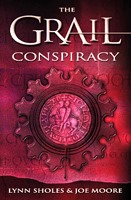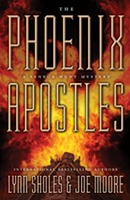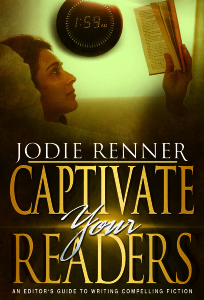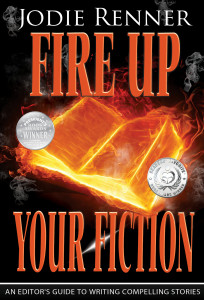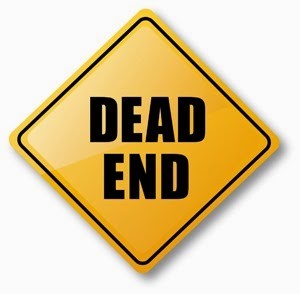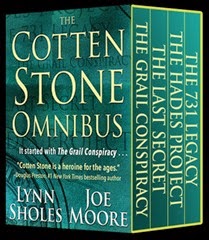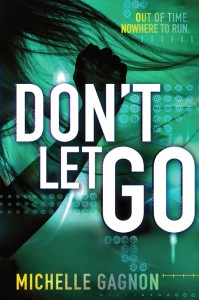Today I welcome author, blogger and fellow ITW member, Kristen Lamb, to TKZ. I asked Kristen to share her thoughts on the pros and cons of prologues. Enjoy! Joe Moore
————————
To prologue or not to prologue? That is the  question. The problem with the prologue is it has kind of gotten a bad rap over the years, especially with agents. They generally hate them. Why? In my opinion, it is because far too many writers don’t use prologues properly and that, in itself, has created its own problem.
question. The problem with the prologue is it has kind of gotten a bad rap over the years, especially with agents. They generally hate them. Why? In my opinion, it is because far too many writers don’t use prologues properly and that, in itself, has created its own problem.
Because of the steady misuse of prologues, most readers skip them. Thus, the question of whether or not the prologue is even considered the beginning of your novel can become a gray area if the reader just thumbs pages until she sees Chapter One.
So without further ado…
The 7 Deadly Sins of Prologues
Sin #1 If your prologue is really just a vehicle for massive information dump…
This is one of the reasons I recommend writing detailed backgrounds of all main characters before we begin (especially when we are new writers). Get all of that precious backstory out of your system.
This is a useful tactic in that first, it can help us see if a) our characters are psychologically consistent, b) can provide us with a feel for the characters’ psychological motivations, which will help later in plotting.
I have a little formula: background–> motivations –>goals–>a plan–>a detailed plan, which = plot and c) can help us as writers honestly see what details are salient to the plot.
This helps us better fold the key details into the plotting process so that this vital information can be blended expertly into the story real-time.
Many new writers bungle the prologue because they lack a system that allows them to discern key details or keep track of key background details. This makes for clumsy writing, namely a giant “fish head” labeled prologue. What do we do with fish heads? We cut them off and throw them away…unless you are my mother’s Scandinavian family and then they make soup *shivers*.
Sin #2 If your prologue really has nothing to do with the main story.
This point ties into the earlier sin. Do this. Cut off the prologue. Now ask, “Has this integrally affected the story?” If it hasn’t? It’s likely a fish head masquerading as a prologue.
Sin #3 If your prologue’s sole purpose is to “hook” the reader…
If readers have a bad tendency to skip past prologues, and the only point of our prologue is to hook the reader, then we have just effectively shot ourselves in the foot. We must have a great hook in a prologue, but then we need to also have a hook in Chapter One. If we can merely move the prologue to Chapter One and it not upset the flow of the story? Then that is a lot of pressure off our shoulders to be “doubly” interesting.
Sin #4 If your prologue is overly long…
Prologues need to be short and sweet and to the point. Get too long and that is a warning flag that this prologue is being used to cover for sloppy writing or really should have just been Chapter One.
Sin #5 If your prologue is written in a totally different style and voice that is never tied back into the main story…
Pretty self-explanatory.
Sin #6 If your prologue is über-condensed world-building…
World-building is generally one of those things, like backstory, that can and should be folded into the narrative. Sometimes it might be necessary to do a little world-building, but think “floating words in Star Wars.” The yellow floating words that drift off into space help the reader get grounded in the larger picture before the story begins. But note the floating words are not super-detailed Tolkien world-building.
They are simple and, above all, brief.
Sin #7 If your prologue is there solely to “set the mood…”
We have to set the mood in Chapter One anyway, so like the hook, why do it twice?
The Prologue Virtues
Now that we have discussed the 7 Deadly Sins of Prologues, you might be asking yourself, “So when is it okay to use a prologue?” Glad you asked.
Virtue #1
Prologues can be used to resolve a time gap with information critical to the story.
Genre will have a lot to do with whether one uses a prologue or not. Thrillers generally employ prologues because what our hero is up against may be an old enemy. In James Rollins’s The Doomsday Key the prologue introduces the “adversary” Sigma will face in the book. Two monks come upon a village where every person has literally starved to death when there is more than an abundance of food.
Many centuries pass and the very thing that laid waste to that small village is now once more a threat. But this gives the reader a feel for the fact that this is an old adversary. The prologue also paints a gripping picture of what this “adversary” can do if unleashed once more.
The prologue allows the reader to pass centuries of time without getting a brain cramp. Prologue is set in medieval times. Chapter One is in modern times. Prologue is also pivotal for understanding all that is to follow.
Prologues are used a lot in thrillers and mysteries to see the crime or event that sets off the story. Readers of these genres have been trained to read prologues and generally won’t skip. The serial killer dumping his latest victim is important to the story. It’s a genre thing. Yet, still? Keep it brief. Reveal too much and readers won’t want to turn pages to learn more.
Virtue # 2
Prologues can be used if there is a critical element in the backstory relevant to the plot.
The first Harry Potter book is a good example of a book that could have used a prologue, but didn’t (likely because Rowling knew it would likely get skipped). Therese Walsh in her blog Once Before A Time Part 2 said this:
J.K. Rowling’s Harry Potter and the Sorcerer’s Stone is told in a close 3rd person POV (Harry’s), but her first chapter is quite different, told when Harry is a baby and switching between omniscient and 3rd person POVs (Mr. Dursley’s and Dumbledore’s). Rowling may have considered setting this information aside as a prologue because of those different voices and the ten-year lag between it and the next scene, but she didn’t do it. The info contained in those first pages is critical, it helps to set the story up and makes it more easily digested for readers. And it’s 17 pages long.
This battle is vital for the reader to be able to understand the following events and thus would have been an excellent example of a good prologue. But, Rowling, despite the fact this chapter would have made a prime prologue still chose to make it Chapter One so the reader would actually read this essential piece of story information.
Food for thought for sure.
Yes, I had Seven Sins and only Two Virtues. So sue me.  That should be a huge hint that there are a lot more reasons to NOT use a prologue than there are to employ one (that and I didn’t want this blog to be 10,000 words long).
That should be a huge hint that there are a lot more reasons to NOT use a prologue than there are to employ one (that and I didn’t want this blog to be 10,000 words long).
Prologues, when done properly can be amazing literary devices. Yet, with a clear reader propensity to skip them, then that might at least make us pause before we decide our novel must have one. Make sure you ask yourself honest questions about what purpose these pages are really serving. Are they an essential component of a larger whole? Or are you using Bondo to patch together a weak plot?
But, don’t take my word for it. Over the ages, I’ve collected great blogs regarding prologues to help you guys become stronger in your craft. These are older posts, but timeless:
Once Before a Time: Prologues Part 1 by Therese Walsh
Once Before a Time Part 2 by Therese Walsh
Agent Nathan Bransford offers his opinion as does literary agent Kristin Nelson
Carol Benedict’s blog Story Elements: Using a Prologue
To Prologue or Not To Prologue by Holly Jennings
If after all of this information, you decide you must have a prologue because all the coolest kids have one, then at least do it properly. Here is a great e-how article.
So if you must write a prologue, then write one that will blow a reader away. Take my First Five Pages class (below) and I can give you some expert perspective of whether to keep or ditch or if you want to keep your prologue, then how can you make it WORK?
What are some of the questions, concerns, troubles you guys have had with prologues? Which ones worked? Which ones bombed? What are your solutions or suggestions?
———————-
Kristen is the author of the best-selling book, Rise of the Machines—Human Authors in a Digital World in addition to the #1 best-selling books We Are Not Alone—The Writer’s Guide to Social Media and Are You There, Blog? It’s Me, Writer. Kristen is the founder of the WANA movement, the CEO of WANA International and creator of WANATribe, the social network for creative professionals. She is a contributing blogger for The Huffington Post and the official social media columnist for Author Magazine.
Follow Kristen on Facebook, Twitter at @KristenLambTX and on her regular author blog.
To contact Kristen, e-mail kristen at wana intl dot com.
 I’ve written before about the pulp writer W. T. Ballard. He was a friend of my parents, and I only wish I’d been aware enough to arrange a sit-down with him to talk writing. Alas, he died in 1980 while I was still trying to become the next Brando.
I’ve written before about the pulp writer W. T. Ballard. He was a friend of my parents, and I only wish I’d been aware enough to arrange a sit-down with him to talk writing. Alas, he died in 1980 while I was still trying to become the next Brando.

